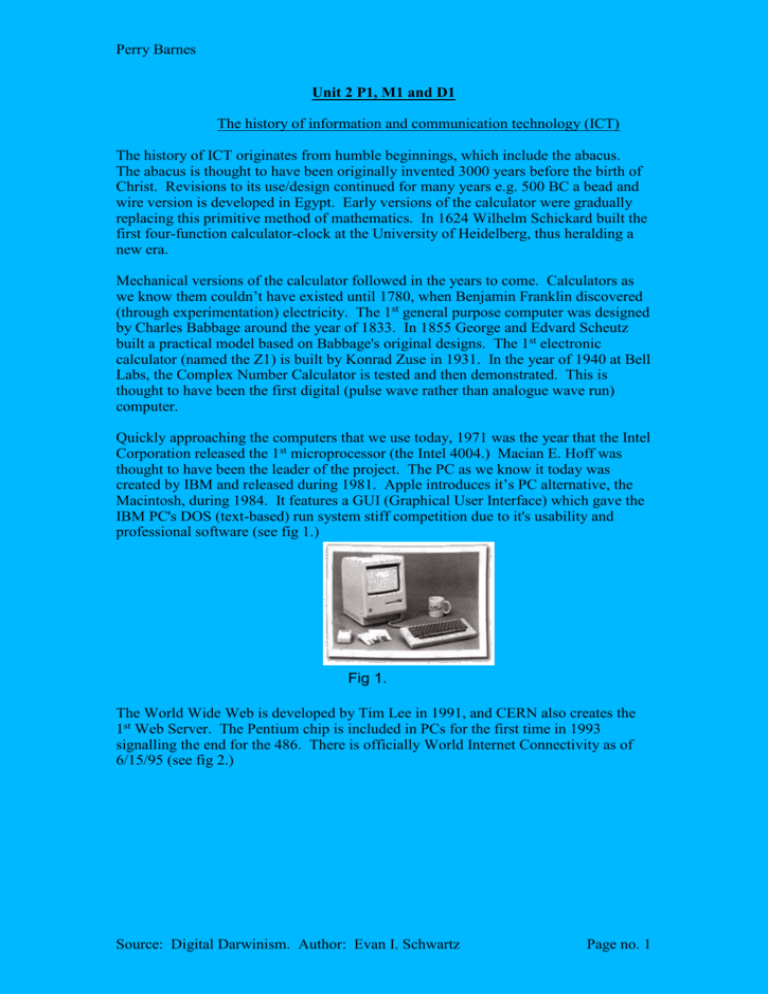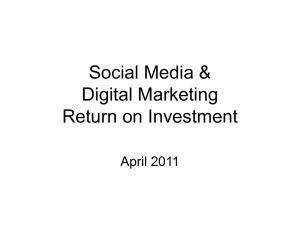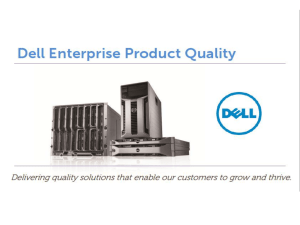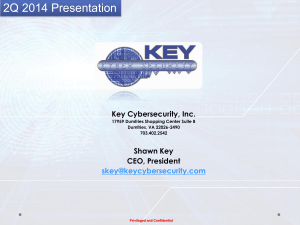The History of ICT & Today`s E
advertisement

Perry Barnes Unit 2 P1, M1 and D1 The history of information and communication technology (ICT) The history of ICT originates from humble beginnings, which include the abacus. The abacus is thought to have been originally invented 3000 years before the birth of Christ. Revisions to its use/design continued for many years e.g. 500 BC a bead and wire version is developed in Egypt. Early versions of the calculator were gradually replacing this primitive method of mathematics. In 1624 Wilhelm Schickard built the first four-function calculator-clock at the University of Heidelberg, thus heralding a new era. Mechanical versions of the calculator followed in the years to come. Calculators as we know them couldn’t have existed until 1780, when Benjamin Franklin discovered (through experimentation) electricity. The 1st general purpose computer was designed by Charles Babbage around the year of 1833. In 1855 George and Edvard Scheutz built a practical model based on Babbage's original designs. The 1st electronic calculator (named the Z1) is built by Konrad Zuse in 1931. In the year of 1940 at Bell Labs, the Complex Number Calculator is tested and then demonstrated. This is thought to have been the first digital (pulse wave rather than analogue wave run) computer. Quickly approaching the computers that we use today, 1971 was the year that the Intel Corporation released the 1st microprocessor (the Intel 4004.) Macian E. Hoff was thought to have been the leader of the project. The PC as we know it today was created by IBM and released during 1981. Apple introduces it’s PC alternative, the Macintosh, during 1984. It features a GUI (Graphical User Interface) which gave the IBM PC's DOS (text-based) run system stiff competition due to it's usability and professional software (see fig 1.) Fig 1. The World Wide Web is developed by Tim Lee in 1991, and CERN also creates the 1st Web Server. The Pentium chip is included in PCs for the first time in 1993 signalling the end for the 486. There is officially World Internet Connectivity as of 6/15/95 (see fig 2.) Source: Digital Darwinism. Author: Evan I. Schwartz Page no. 1 Perry Barnes Fig 2. Supercomputers A supercomputer is the most advanced type of computer (or collection of computers in one large tower) available. They are used for calculations that are too complex for the average computer i.e. for processing and predicting weather from thousands of individual ever changing files of information. An example of a modern supercomputer is IBM's ASCI Purple. It cost 250 million dollars and was built for the Department of Energy (USA.) This computer harnesses a peak speed of 467 teraflops and could be used for purposes such as to simulate aging or the operation of nuclear weapons. Supercomputers were first introduced in the early seventies when Seymour Cray unveiled the Cray 1. How ICT has been embedded into today’s industry and commerce? Once a difficult problem, now an integral part of all industries, ICT has become accepted due to huge benefits for businesses that if were ignored would become massive disadvantages in the competitive marketplace. E-mail with its time saving cost effective nature was unused ten years ago, but now most businesses panic if their Internet connection stops working. Computers have replaced the traditional system of typewriters which were unforgiving if you made a mistake. Now backup copies and spell checkers make that process easier (as I’ve found out typing this.) Filing space has been reduced with computerised records taking up the space of a PC instead of several cabinets. These benefits and others have helped ICT become embedded in today’s industries. The development of the World Wide Web has given commercial enterprises a new business avenue to go down. The whole area of commerce involving the Internet is Source: Digital Darwinism. Author: Evan I. Schwartz Page no. 2 Perry Barnes termed E-commerce and has been used (not always successfully) since the arrival of the Internet during the mid-nineties. Early e-companies suffered from offering the same product (as actual physical stores) with no Internet specific benefits to attract new or existing customers. A large percentage of early companies boomed and then went bust, due to heavy investment followed by heavy withdrawal of funds. Huge amounts of funds were invested in companies who had no product to sell and no experience of how to sell it (the nothing to sell that is.) The value of shares and the combined PLC (Public Limited Company) value of some of these companies were higher than the value of established profit making businesses. Once shareholders cleared the mud from their eyes and paid attention it was too late to turn these situations around. Thus the method of selling and running made allegedly unstoppable companies go bust over night. A domino effect filled the air and soon people were wondering just what had happened to their dream investments. Fortunately the market for e-commerce is stabilizing as companies learn from their mistakes and offer products/services, which can only be accessed through the Internet e.g. E-bay. The interactivity and relative speed of computers/the Internet are being used in ways, which could not be achieved using regular business practices. The Internet is a development in the history of ICT which is now (in 2005) greatly affecting the development of industry and commerce. The idea of e-commerce didn't exist until the invention of the Internet and from reading this document I hope the reader has understood as I have, how the development of e-commerce has pushed forward industry and commerce into new lines of business. E-mail is another specific example, which has speeded up industries and given commerce a boost. Dell The development of ICT in respects to the Internet, has had a major effect on the development of the PC production industry in America. For my example(s) I will use the PC production company Dell, and the companies that their business strategies helped demote. Dell began taking custom orders over the Internet in 1996. Since then Dell's stock value has doubled every six months and it was the highest stock in the S&P 500 Index in the category of the 90's. Dell is the premier supplier of computers to the US government and because of this their factory has been assigned the privilege of being a US Customs Subzone. A notice reminds the viewers that anyone caught with unauthorized equipment faces “up to a $5,000 fine or a 10-year prison sentence.” Dell’s advantage is that it has a system where they tell their suppliers exactly what their daily production requirements are. Instead of a system of estimating how much of a specific product will be needed and then having to throw away out of date produce i.e. stale food, or in the example of a PC building company parts which have been replaced by higher specification parts, Dell order how many of each piece of equipment they actually need. A quote from Michael Dell suggested that Dell order items like this “Tomorrow morning we need 8,562 units, and deliver them to door number seven by 7 a.m.” This structure of network production has been vital to Dell’s recent success. It is thought that in the computer business the market value of components and systems reduces by 1 percent a week. This trend means that quick delivery of orders must be given priority. The top 15 suppliers of components to Dell have established direct ordering systems over the Internet meaning that Dell can use the network to order parts in a similar fashion. Dell’s major advantage over similar companies is that Source: Digital Darwinism. Author: Evan I. Schwartz Page no. 3 Perry Barnes customers have the option of ordering their system on-line with the advantage of choosing the specific specifications of the system and components. From the time that a customized order arrives it takes a day to reach the factory. The computer is then given a unique code, which allows the client to watch (not literally) their computer being built. After the order is complete the code is used for customer service enquiries. The process of manufacture takes just four hours including the software testing and instillation phase. This highly effective employee base can produce more than 7,000 new systems every day. This unique system of network production is yet to integrate into most businesses but in this company and industry it has had a major effect on the current development of thinking and practices. The rivals of Dell have had to understand the message being sent by consumers that customisation is the way forward. In one financial quarter of 1998 Dell’s net profit was more than 500 million dollars, a figure which was more than all the other computer manufacturers combined. Other makers of computers like Compaq, IBM and H-P had to adapt or face going out of business. They did, but because of Dell’s large head-start they were always playing catch-up. The time period from the customer entering their order online to the arrival of the complete product at their door, was reduced to 7 days by Dell. Other companies still using the traditional retail system would sell 1 PC (using the time period of “from order to retailers shelf”) on an average of every 83 days. The effect of the Internet has been major in the computer industry. Companies such as Seven Cycles Inc have used similar methods of network production to make them a unique force in their respective marketplace (read the source book for more information.) I would conclude that ICT has not yet fully embedded itself into commerce, but is a viable asset that companies could use to improve profits if used correctly. Perry Barnes Word Count: 1,551 words Source: Digital Darwinism. Author: Evan I. Schwartz Page no. 4








